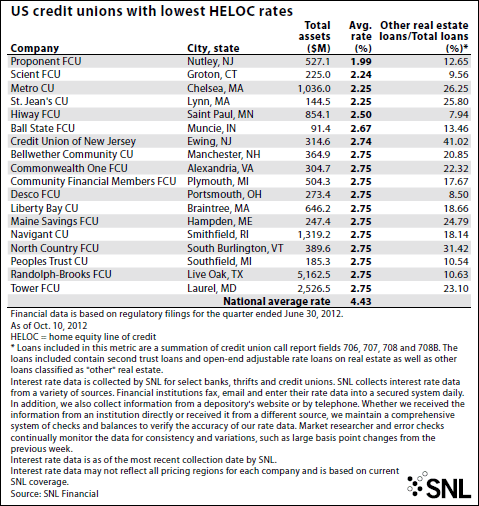Table of Content
Certain types of finance are not regulated, such as bridging loans. Those in rural areas can expect to save around $31 with Equity compared to Allstate. People who live in suburban areas pay about $41 less with Equity compared to Allstate. For policyholders in urban ZIP codes, Equity Insurance Company's average premiums are around $30 less than Allstate.
If approved, you will pay it back through a monthly payment including capital and interest. With HELOCs, you’ll go through a draw period where you will make very small interest-only payments and can continue to dip into the credit line as you need it. Once the draw period is over, you’ll begin making full payments to pay off the loan. Some banks, like Bank of America, will even give you a higher discount on your rate if you take out a certain amount of your line of credit. This fintech company stands out for its online application process which lets customers check their rate, apply and know if they’ve been approved within minutes.
Best Flexible Repayment Terms: Regions Bank
KeyBank’s loan details vary by location; the information here applies to the zip code. These loans and home equity lines of credit are available from many banks, building societies and online loan lenders, giving you options. Home equity lenders typically offer lower interest rates compared to unsecured loan lenders. With the equity in your home as collateral, they can afford to lend for less.

Do note that Connexus’ home equity loan products are not available in Maryland, Texas, Hawaii and Alaska. By clicking "TRY IT", I agree to receive newsletters and promotions from Money and its partners. I agree to Money's Terms of Use and Privacy Notice and consent to the processing of my personal information. Our Home Loan Consultants are specialized in providing home loan expertise and advice.
Should I use a home equity loan to buy a car?
Rates vary based on the size of the loan as well as the selected term. While rates typically go higher as you move into longer-term loans, TD Bank’s 10, 15, and 20-year loans carry lower rates than the shorter 5-year option. If you’re looking for a home equity loan with a term longer than 5 years, TD Bank could be a good fit. Home equity loans give homeowners the ability to tap into the equity built up in their house to secure some extra cash. The best home equity loans offer low rates and easy acceptance because your house acts as collateral in case you can’t or won’t pay, thereby making the risk to the bank much lower. Home co-investing is a home equity loan alternative that lets you tap into your home equity without borrowing against it.
Pentagon Federal Credit Union, or PenFed, serves 2 million members in all 50 states, Washington, D.C., and military bases in Guam, Puerto Rico and Okinawa. This credit union offers competitive rates on its HELOCs, along with other financial services, including credit cards, checking accounts, savings accounts, mortgages and auto loans. Both products have a 10-year borrowing period and a 15-year repayment term and variable interest rates starting at 6.50% and going up to 21.00%. Clients who enroll in automatic monthly payments from a Citizens Bank checking account can get a 0.25% rate discount. Home equity loans and HELOCs with Third Federal come with an annual fee of $65 but no application fees, closing fees, or origination fees. If you set up autopay from an existing Third Federal account before closing, you’ll be eligible for a 0.25% rate discount.
Which Gets Me Money Faster: A Heloc Or A Home Equity Loan
The rate quoted above is good for a 10-year loan term, though you can borrow for terms of five to 30 years. The lower rate also requires automatic withdrawals from a TD Bank checking or savings account. Starting APRs are based on borrowers having the best credit profiles and applying for an LTV of 80% or less. It also includes a 0.25% initial rate discount when a borrower sets up automatic payment from an Old National checking account. Our ratings take into account interest rates, lender fees, loan types, discounts, accessibility, borrower requirements and other attributes.

Another key difference between HELOCs and home equity loans is that the former has variable interest rates and the latter has a fixed interest rate. Most people use home equity loans to access lots of credit or take advantage of lower interest rates. They are generally used for home renovations, debt consolidation, buying new cars or even to buy more property.
Interest rates are expected to climb again after the Federal Reserve raises its benchmark rate next week. The average rate for a HELOC dropped by 63 basis points to 7.30% this week. HELOCs are a good choice when you’re not sure exactly how much money you need to finance or if you just want a line of credit on hand to tap into as needed.

A home equity loan is an installment loan based on the equity of the borrower's home. Most home equity lenders allow you to borrow a certain percentage of your home equity, typically up to 85 percent. Frost doesn’t charge prepayment penalties, application fees or annual fees on its home equity loans, and there are no closing costs on loans from $2,000 to $500,000. The best rates go to customers with excellent credit, so if your credit score needs work, you may want to look elsewhere. Also, borrowers who pay their loans off within 36 months may have to repay closing costs covered by Discover (max $500). When shopping for a home equity loan, look for a competitive interest rate, repayment terms that meet your needs and minimal fees.
Rates will vary depending on where you live, but BBVA Compass will pay your loan in a lump sum and may cover the closing costs for your loan if you meet the company’s criteria. However, with a HELOC you can only borrow up to 95% of your home’s equity at a variable rate of 6.50% up to 18%. Navy Federal offers a longer than average 20-year drawing period, in comparison to the typical 10-year term most competitors offer. During this period you can borrow against your home’s equity as needed.

This makes it easy to compare rates without needing to provide sensitive personal information or undergo a hard credit check. Additionally, the online experience is user-friendly and the application’s breakdown of rates, fees, and terms is easily digestible for customers. Spring EQ may be a relatively new bank founded in 2016, but it has already earned a positive reputation from customers across the 38 states it serves. Spring EQ offers home equity loans, HELOCs, and interest-only HELOCs, providing borrowers with flexible loan options. Home equity loan amounts range from $5,000 to $500,000, while HELOC line amounts range from $50,000 to $500,000. PenFed generally offers HELOC amounts from $25,000 to $1 million.
But to make sure it’s worth the cost to finance, it’s important to first calculate how much you will pay in interest. Minimum requirements generally include a credit score of 620 or higher, a maximum loan-to-value ratio of 80 percent or 85 percent and a documented source of income. To calculate your home equity, subtract your current mortgage balance from the appraised value of your home. Check out Bankrate’s home equity calculator to estimate how much you can borrow.

The main difference with a HELOC is that it’s secured by your home, so the lender can foreclose on the house in the event of default. Before getting a HELOC, shop rates and costs to make sure it’s the best financial loan option for you. How To Negotiate Your Bills & Debts Learn how to ask for discounts and modifications in order to better afford your monthly payments.
In addition, HELOC borrowers may be charged an annual fee of up to $90, which can be waived with a U.S. U.S. Bank offers a rate discount of 0.5% for home equity loan borrowers who set up automatic payments from a U.S. The lowest home equity loan rates are typically only available to the most creditworthy borrowers, so take what steps you can to raise your credit score before you apply for a home equity loan. Beyond that, the most important thing is to shop around and compare offers from multiple lenders in order to find the best rate. Be sure to also factor in closing costs and fees so you can accurately compare the total cost of borrowing.


No comments:
Post a Comment